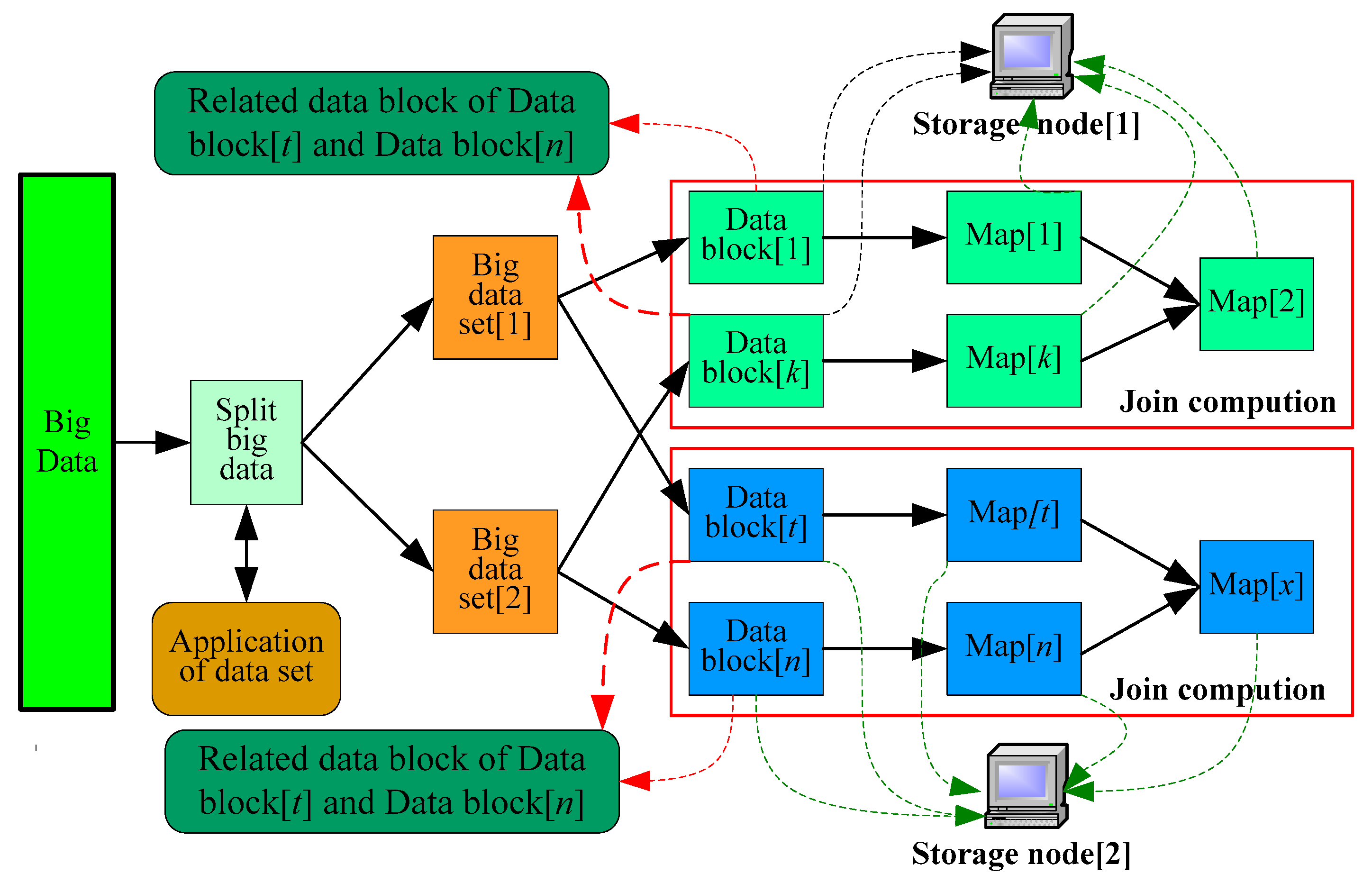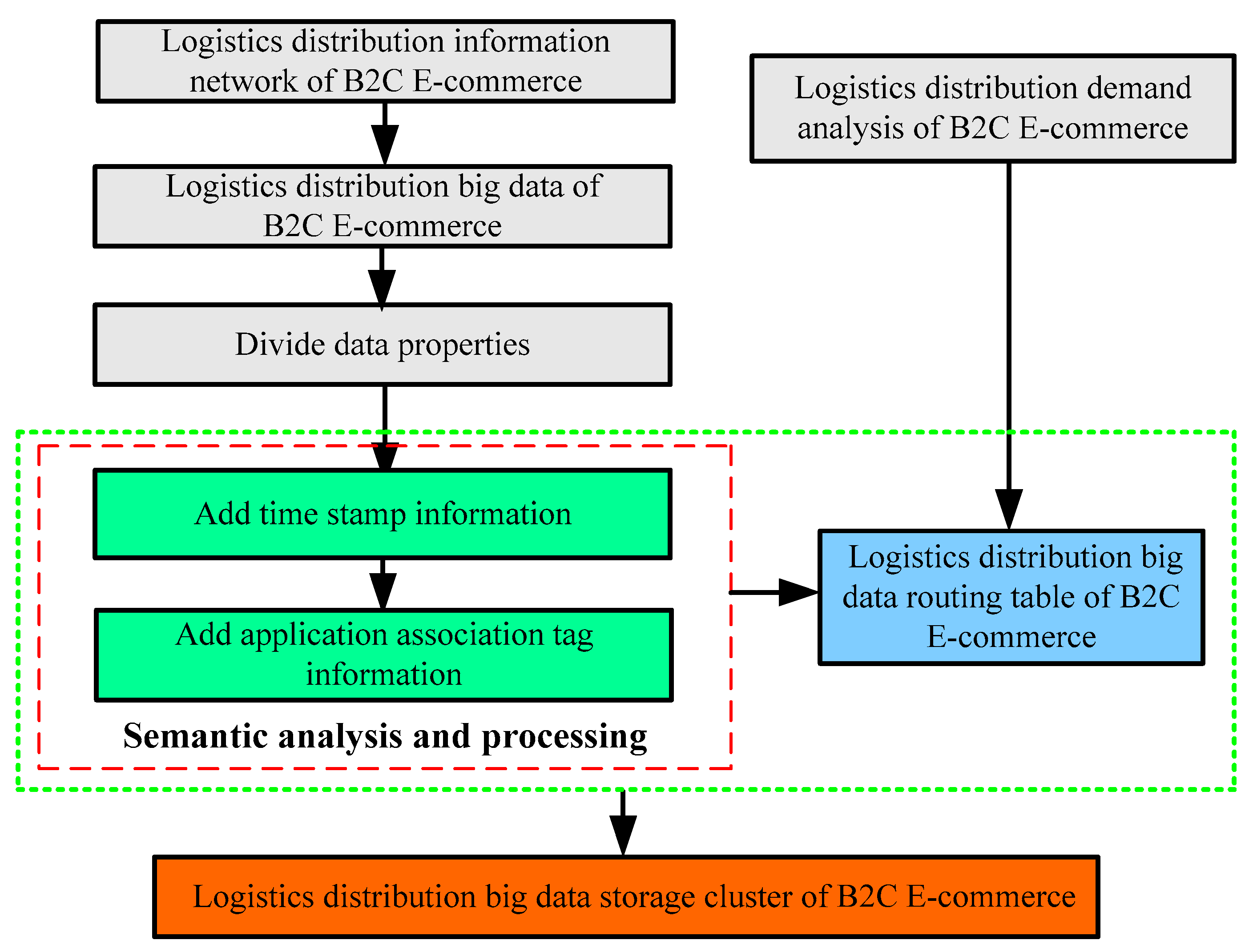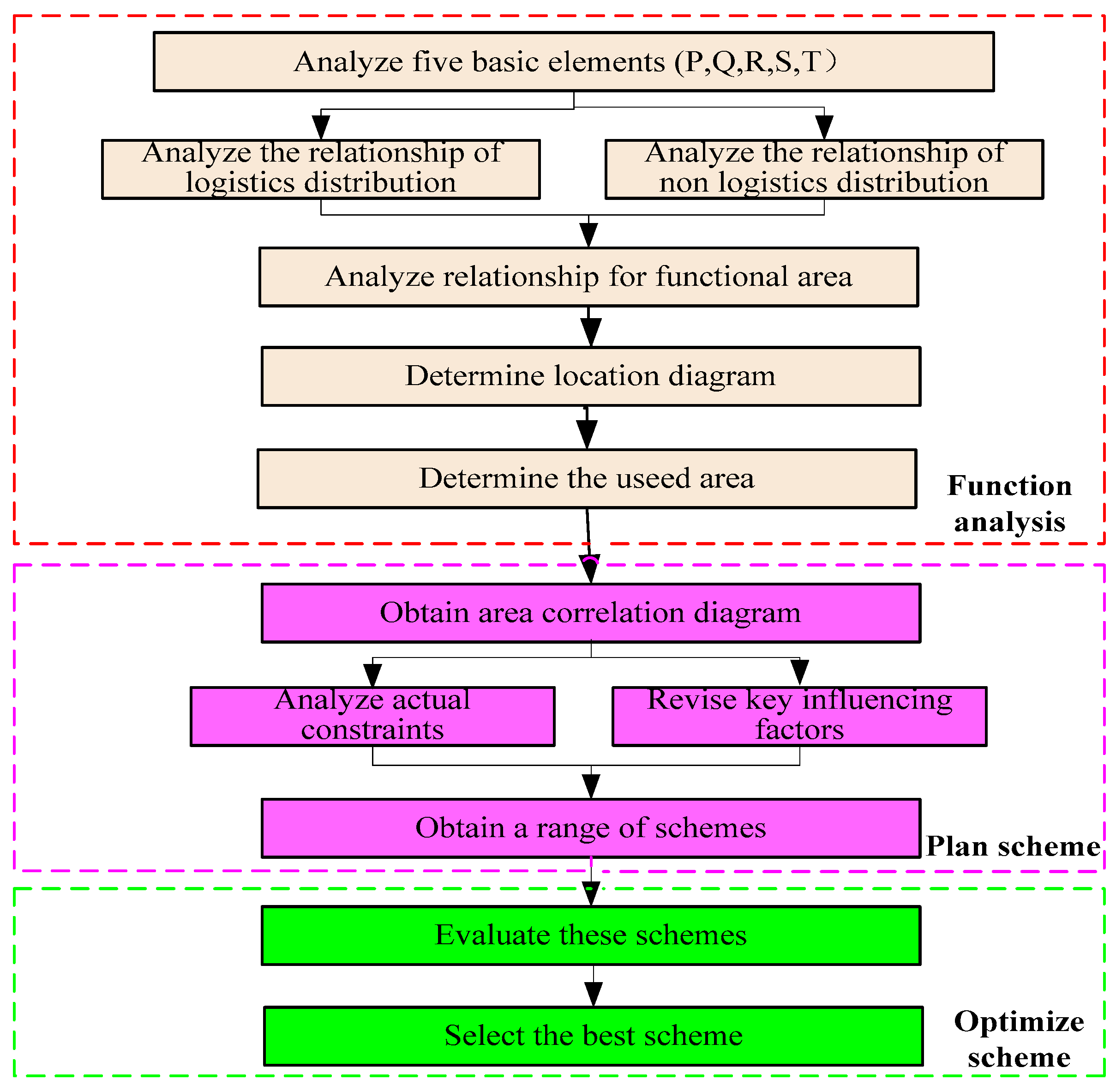Innovation Mode and Optimization Strategy of B2C E-Commerce Logistics Distribution under Big Data
Abstract
1. Introduction
2. Present Circumstance of B2C E-Commerce Logistics Distribution under Big Data
2.1. Low Efficiency of Logistics Distribution Data Processing
2.2. Lack of Innovation of Logistics Distribution Mode
2.3. Lack of Optimization of Logistics Distribution Process
2.4. A Huge Impact on B2C E-Commerce Logistics Distribution Enterprises under Big Data
2.5. Low Efficiency of the Third-Party Logistics Distribution
2.6. Low Level of Logistics Standardization System
3. Influence Factors and Core Problem for B2C E-Commerce Logistics Distribution under Big Data
3.1. Realize the Information Docking of B2C E-Commerce Logistics Distribution
3.2. Increase the Logistics Distribution Utilization Value of B2C E-Commerce
3.3. Improve Customer Satisfaction of B2C E-Commerce Enterprises
3.4. Interaction with Sustainable Development Goals of B2C E-Commerce Logistics Distribution
4. Model of B2C E-Commerce Logistics Distribution under Big Data
5. Innovation and Optimization Strategy for B2C E-Commerce Logistics Distribution under Big Data
5.1. Optimization Strategy for B2C E-Commerce Logistics Distribution under Big Data Framework
5.2. Hybrid Optimization Mode for B2C E-Commerce Product Sales and Logistics Distribution under Big Data Platform
5.3. Optimization Strategy for B2C E-Commerce Logistics Distribution Process under System Layout Design
5.4. The Logistics Distribution Route Optimization of B2C E-Commerce under Big Data
6. Big Data Technology in B2C E-Commerce Logistics Business Management
7. Conclusions and Contribution
Author Contributions
Funding
Conflicts of Interest
References
- Giuffrida, M.; Mangiaracina, R.; Perego, A.; Tumino, A. Cross-border B2C E-commerce to China An evaluation of different logistics solutions under uncertainty. Int. J. Phys. Distrib. Logist. Manag. 2019. [Google Scholar] [CrossRef]
- Wang, X.T.; Wang, H. A study on sustaining corporate innovation with E-commerce in China. Sustainability 2019, 11, 6604. [Google Scholar] [CrossRef]
- Yu, Y.N.N.; Kim, H.S. Online retailers’ return policy and prefactual thinking An exploratory study of USA and China E-commerce markets. J. Fash. Mark. Manag. 2019, 23, 504–518. [Google Scholar] [CrossRef]
- Department of Trade in Services and Commercial Services of the Ministry of Commerce Comments on China’s Culture Trade in 2019. Available online: http://english.mofcom.gov.cn/article/newsrelease/policyreleasing/202003/20200302946575.shtml (accessed on 1 January 2020).
- Li, L.; Du, K.; Zhang, W.; Mao, J.-Y. Poverty alleviation through government-led E-commerce development in rural China: An activity theory perspective. Inf. Syst. J. 2019, 29, 914–952. [Google Scholar] [CrossRef]
- Ranieri, L.; Digiesi, S.; Silvestri, B.; Roccotelli, M. A review of last mile logistics innovations in an externalities cost reduction vision. Sustainability 2018, 10, 782. [Google Scholar] [CrossRef]
- Stefanini, A.; Aloini, D.; Benevento, E.; Dulmin, R.; Mininno, V. A data-driven methodology for supporting resource planning of health services. Socio-Econ. Plan. Sci. 2019, 100744. [Google Scholar] [CrossRef]
- Aloini, D.; Benevento, E.; Stefaninia, A. Conceptual design of a tool supporting the last mile logistics in hospitals. In Proceedings of the 12th IADIS International Conference Information Systems, Utrecht, The Netherlands, 11–13 April 2019; pp. 245–249. [Google Scholar]
- Fanti, M.P.; Rinaldi, A.; Roccotelli, M.; Silvestri, B.; Porru, S.; Pani, F.E. Software requirements and use cases for electric light vehicles management. In Proceedings of the 2018 IEEE International Conference on Systems, Man, and Cybernetics (SMC), Miyazaki, Japan, 7–10 October 2018; pp. 311–316. [Google Scholar]
- Digiesi, S.; Fanti, M.P.; Mummolo, G.; Silvestri, B. Externalities Reduction Strategies in Last Mile Logistics: A Review. In Proceedings of the 2017 IEEE International Conference on Service Operations and Logistics, and Informatics (SOLI), Bari, Italy, 18–20 September 2017; pp. 248–253. [Google Scholar]
- Liu, Y.; Mu, Y.; Chen, K. Daily activity feature selection in smart homes based on pearson correlation coefficient. Neural Process. Lett. 2020, 1–17. [Google Scholar] [CrossRef]
- Wang, Z.; Ren, X.; Ji, Z.; Huang, W.; Wu, T. A novel bio-heuristic computing algorithm to solve the capacitated vehicle routing problem based on Adleman–Lipton model. Biosystems 2019, 184, 103997. [Google Scholar] [CrossRef] [PubMed]
- Zhao, H.; Li, D.; Yang, X.; Deng, W. Research on vibration suppression method of alternating current motor based on fractional order control strategy. Proc. Inst. Mech. Eng. Part E J. Process. Mech. Eng. 2017, 231, 786–799. [Google Scholar] [CrossRef]
- Deng, W.; Liu, H.; Xu, J.; Zhao, H.; Song, Y. An improved quantum-inspired differential evolution algorithm for deep belief network. IEEE Trans. Instrum. Meas. 2020. [Google Scholar] [CrossRef]
- He, Z.; Shao, H.; Zhang, X.; Cheng, J.; Yang, Y. Improved deep transfer auto-encoder for fault diagnosis of gearbox under variable working conditions with small training samples. IEEE Access 2019, 7, 115368–115377. [Google Scholar] [CrossRef]
- Ji, S.; Sun, Q. Low-carbon planning and design in b&r logistics service: A case study of an E-commerce big data platform in China. Sustainability 2017, 9, 2052. [Google Scholar]
- Wang, Y.; Wang, Y.; Lee, S.H. The effect of cross-border E-commerce on china’s international trade: An empirical study based on transaction cost analysis. Sustainability 2017, 9, 2028. [Google Scholar] [CrossRef]
- Zhao, H.; Zuo, S.; Hou, M.; Liu, W.; Yu, L.; Yang, X.; Deng, W. A novel adaptive signal processing method based on enhanced empirical wavelet transform technology. Sensors 2018, 18, 3323. [Google Scholar] [CrossRef]
- Luo, J.; Chen, H.; Heidari, A.A.; Xu, Y.; Zhang, Q.; Li, C. Multi-strategy boosted mutative whale-inspired optimization approaches. Appl. Math. Model. 2019, 73, 109–123. [Google Scholar] [CrossRef]
- Liu, Y.Q.; Wang, X.X.; Zhai, Z.G. Timely daily activity recognition from headmost sensor events. ISA Trans. 2019, 94, 379–390. [Google Scholar] [CrossRef] [PubMed]
- Zhao, H.; Zheng, J.; Deng, W.; Song, Y. Semi-supervised broad learning system based on manifold regularization and broad network. IEEE Trans. Circuits Syst. I 2020, 67, 983–994. [Google Scholar] [CrossRef]
- Su, W.; Wang, Y.; Qian, L.; Zeng, S.; Baležentis, T.; Štreimikienė, D. Creating a sustainable policy framework for cross-border E-commerce in China. Sustainability 2019, 11, 943. [Google Scholar] [CrossRef]
- Xu, Y.; Chen, H.; Heidari, A.A. An efficient chaotic mutative moth-flame-inspired optimizer for global optimization tasks. Expert Syst. Appl. 2019, 129, 135–155. [Google Scholar] [CrossRef]
- Deng, W.; Li, W.; Yang, X. A novel hybrid optimization algorithm of computational intelligence techniques for highway passenger volume prediction. Expert Syst. Appl. 2011, 38, 4198–4205. [Google Scholar] [CrossRef]
- Li, T.; Qian, Z.; He, T. Short-term load forecasting with improved CEEMDAN and GWO-based multiple kernel ELM. Complexity 2020, 2020, 1–20. [Google Scholar] [CrossRef]
- Farooq, Q.; Fu, P.; Hao, Y.; Jonathan, T.; Zhang, Y. A review of management and importance of E-commerce implementation in service delivery of private express enterprises of China. SAGE Open 2019, 9, 2158244018824194. [Google Scholar] [CrossRef]
- Li, T.; Shi, J.; Li, X. Image encryption based on pixel-level diffusion with dynamic filtering and DNA-level permutation with 3D Latin cubes. Entropy 2019, 21, 319. [Google Scholar] [CrossRef]
- Ran, W.X.; Zhang, Z.; Liu, S. A flexible logistics distribution hub model considering cost weighted time. Discret. Dyn. Nat. Soc. 2017, 2017, 1–9. [Google Scholar] [CrossRef]
- Jia, X.Y. Analysis and research on B2C model of agricultural product logistics distribution under electronic commerce mode. Agro Food Ind. Hi-Tech 2017, 28, 1122–1126. [Google Scholar]
- Liu, H.Q.; Pretorius, L.; Jiang, D.D. Optimization of cold chain logistics distribution network terminal. EURASIP. J. Wirel. Commun. Netw. 2018, 2018, 158. [Google Scholar] [CrossRef]
- Zhang, Q. Pharmaceutical management of linezolid and optimization of logistics distribution in online medicine E-commerce. Bol. De Malariol. Y Salud Ambient. 2018, 58, 35–43. [Google Scholar]
- Leung, K.; Choy, K.L.T.; Siu, P.K.; Ho, G.T.S.; Lam, H.; Lee, C.K.M. A B2C E-commerce intelligent system for re-engineering the e-order fulfilment process. Expert Syst. Appl. 2018, 91, 386–401. [Google Scholar] [CrossRef]
- Arnold, F.; Cardenas, I.; Sörensen, K.; Dewulf, W. Simulation of B2C E-commerce distribution in Antwerp using cargo bikes and delivery points. Eur. Trans. Res. Rev. 2018, 10, 2. [Google Scholar] [CrossRef]
- Xu, G.; Qiu, X.; Fang, M.; Kou, X.; Yu, Y. Data-driven operational risk analysis in E-commerce Logistics. Adv. Eng. Informatics 2019, 40, 29–35. [Google Scholar] [CrossRef]
- Barenji, A.V.; Wang, W.; Li, Z.; Guerra-Zubiaga, D.A. Intelligent E-commerce logistics platform using hybrid agent based approach. Transp. Res. Part E-Logi. Transp. Rev. 2019, 126, 15–31. [Google Scholar] [CrossRef]
- Moons, S.; Braekers, K.; Ramaekers, K.; Caris, A.; Arda, Y. The value of integrating order picking and vehicle routing decisions in a B2C E-commerce environment. Int. J. Prod. Res. 2019, 57, 6405–6423. [Google Scholar] [CrossRef]
- Olsson, J.; Hellstrom, D.; Palsson, H. Framework of last mile logistics research: A systematic review of the literature. Sustainability 2019, 11, 7131. [Google Scholar] [CrossRef]
- Zhong, Y.; Guo, F.; Wang, Z.; Tang, H. Coordination analysis of revenue sharing in E-commerce logistics service supply chain with cooperative distribution. SAGE Open 2019, 9, 2158244019870536. [Google Scholar] [CrossRef]
- Zhou, Q.Y.; Zhang, Z.M.; Wang, Y.C. Research on safety management system optimization of B2C E-commerce intelligent logistics information system based on data cube. J. Intell. Fuzzy Syst. 2020, 38, 1585–1592. [Google Scholar] [CrossRef]
- Xu, Y.; Chen, H.; Luo, J. Enhanced Moth-flame optimizer with mutation strategy for global optimization. Inf. Sci. 2019, 492, 181–203. [Google Scholar] [CrossRef]
- Zhao, H.; Liu, H.; Xu, J.; Deng, W. Performance prediction using high-order differential mathematical morphology gradient spectrum entropy and extreme learning machine. IEEE Trans. Instrum. Meas. 2019. [Google Scholar] [CrossRef]
- Shao, H.; Cheng, J.; Jiang, H.; Yang, Y.; Wu, Z. Enhanced deep gated recurrent unit and complex wavelet packet energy moment entropy for early fault prognosis of bearing. Knowl. Based Syst. 2019, 188, 105022. [Google Scholar] [CrossRef]
- Fu, H.L.; Wang, M.M.; Li, P. Tracing knowledge development trajectories of the internet of things domain: A main path analysis. IEEE Trans. Ind. Inf. 2019, 15, 6531–6540. [Google Scholar] [CrossRef]
- Wang, Z.; Ji, Z.; Wang, X.; Wu, T.; Huang, W. A new parallel DNA algorithm to solve the task scheduling problem based on inspired computational model. BioSystems 2017, 162, 59–65. [Google Scholar] [CrossRef]
- Chen, H.; Zhang, Q.; Luo, J. An enhanced Bacterial Foraging Optimization and its application for training kernel extreme learning machine. Appl. Soft Comput. 2020, 86, 105884. [Google Scholar] [CrossRef]
- Xue, Y.; Xue, B.; Zhang, M. Self-adaptive particle swarm optimization for large-scale feature selection in classification. ACM Trans. Knowl. Discov. Data 2019, 13, 50. [Google Scholar] [CrossRef]
- Deng, W.; Xu, J.; Song, Y.; Zhao, H. An effective improved co-evolution ant colony optimization algorithm with multi-strategies and its application. Int. J. Bio-Inspired Comput. 2019, 2019, 1–10. [Google Scholar]
- Deng, W.; Xu, J.; Zhao, H. An improved ant colony optimization algorithm based on hybrid strategies for scheduling problem. IEEE Access 2019, 7, 20281–20292. [Google Scholar] [CrossRef]
- Deng, W.; Zhao, H.; Yang, X.; Xiong, J.; Sun, M.; Li, B. Study on an improved adaptive PSO algorithm for solving multi-objective gate assignment. Appl. Soft Comput. 2017, 59, 288–302. [Google Scholar] [CrossRef]
- Chen, R.; Guo, S.K.; Wang, X.Z.; Zhang, T.L. Fusion of multi-RSMOTE with fuzzy integral to classify bug reports with an imbalanced distribution. IEEE Trans. Fuzzy Syst. 2019, 27, 2406–2420. [Google Scholar] [CrossRef]
- Deng, W.; Zhao, H.M.; Zou, L.; Li, G.; Yang, X.; Wu, D. A novel collaborative optimization algorithm in solving complex optimization problems. Soft Comput. 2017, 21, 4387–4398. [Google Scholar] [CrossRef]
- Yang, H.; Gong, S.S.; Liu, Y.Q.; Lin, Z.K.; Qu, Y. A multi-task learning model for daily activity forecast in smart home. Sensors 2020, 20, 1933. [Google Scholar] [CrossRef]
- Gan, M.; Yang, S.; Li, D.D. A novel intensive distribution logistics network design and profit allocation problem considering sharing economy. Complexity 2018, 2018, 1–15. [Google Scholar] [CrossRef]
- Wang, Y.J. Negotiation and scheduling decisions of marine intelligent supply chain based on stochastic distribution. J. Coast. Res. 2019, 98, 183–186. [Google Scholar] [CrossRef]
- Ouyang, F. Construction of integrated management model of port logistics supply chain based on big data. J. Coast. Res. 2019, 93, 1053–1058. [Google Scholar] [CrossRef]
- Zhao, H.; Zheng, J.; Xu, J.; Deng, W. Fault diagnosis method based on principal component analysis and broad learning system. IEEE Access 2019, 7, 99263–99272. [Google Scholar] [CrossRef]
- Cui, Y.L.; Xie, X.; Liu, Y. Social media and mobility landscape: Uncovering spatial patterns of urban human mobility with multi source data. Front. Environ. Sci. Eng. 2018, 12, 7. [Google Scholar] [CrossRef]
- Cao, C.; Li, C.; Yang, Q.; Liu, Y.; Qu, T. A novel multi-objective programming model of relief distribution for sustainable disaster supply chain in large-scale natural disasters. J. Clean. Prod. 2018, 174, 1422–1435. [Google Scholar] [CrossRef]
- Zhao, Y.; Li, D.; Pan, L.Q. Cooperation or competition: An evolutionary game study between commercial banks and big data-based E-commerce financial institutions in China. Discret. Dyn. Nat. Soc. 2015, 2015, 1–8. [Google Scholar] [CrossRef]
- Behl, A.; Dutta, P.; Lessmann, S.; Dwivedi, Y.K.; Kar, S. A conceptual framework for the adoption of big data analytics by E-commerce startups: A case-based approach. Inf. Syst. E-Bus. Manag. 2019, 17, 285–318. [Google Scholar] [CrossRef]
- Zhang, B.; Du, Z.; Wang, B.; Wang, Z. Motivation and challenges for E-commerce in e-waste recycling under “Big data” context: A perspective from household willingness in China. Technol. Forecast. Soc. Chang. 2019, 144, 436–444. [Google Scholar] [CrossRef]
- Zhou, H.J.; Sun, G.; Fu, S. A scalable approach for fraud detection in online E-commerce transactions with big data analytics. Comput. Mater. Contin. 2019, 60, 179–192. [Google Scholar] [CrossRef]
- Liu, X.; Liu, X.; Luo, X.; Fu, H.; Wang, M.; Li, L. Impact of different policy instruments on diffusing energy consumption monitoring technology in public buildings: Evidence from Xi’an, China. J. Clean. Prod. 2020, 251, 119693. [Google Scholar] [CrossRef]
- Wu, J.; Shi, J.; Li, T.Y. A novel image encryption approach based on a hyperchaotic system, pixel-level filtering with variable kernels, and DNA-level diffusion. Entropy 2020, 22, 5. [Google Scholar] [CrossRef]





© 2020 by the authors. Licensee MDPI, Basel, Switzerland. This article is an open access article distributed under the terms and conditions of the Creative Commons Attribution (CC BY) license (http://creativecommons.org/licenses/by/4.0/).
Share and Cite
Zhao, Y.; Zhou, Y.; Deng, W. Innovation Mode and Optimization Strategy of B2C E-Commerce Logistics Distribution under Big Data. Sustainability 2020, 12, 3381. https://doi.org/10.3390/su12083381
Zhao Y, Zhou Y, Deng W. Innovation Mode and Optimization Strategy of B2C E-Commerce Logistics Distribution under Big Data. Sustainability. 2020; 12(8):3381. https://doi.org/10.3390/su12083381
Chicago/Turabian StyleZhao, Yingyan, Yihong Zhou, and Wu Deng. 2020. "Innovation Mode and Optimization Strategy of B2C E-Commerce Logistics Distribution under Big Data" Sustainability 12, no. 8: 3381. https://doi.org/10.3390/su12083381
APA StyleZhao, Y., Zhou, Y., & Deng, W. (2020). Innovation Mode and Optimization Strategy of B2C E-Commerce Logistics Distribution under Big Data. Sustainability, 12(8), 3381. https://doi.org/10.3390/su12083381




